Table of Contents
Pre-writing Activities – Prepare the Hand
Phonemic Awareness – Prepare the Mind
The first approach to preschool writing is preparing the hand and the mind. Pre-writing activities help develop fine motor skills and hand-eye coordination, while phonemic awareness and concentration lay the foundation for literacy. In Montessori, many Practical Life activities help strengthen pre-writing skills, and phonics can be introduced using Sandpaper Letters or any type of sensory letter.
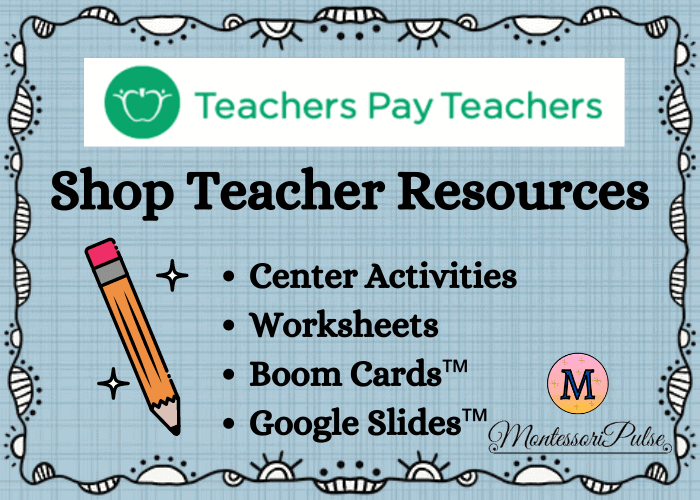
How to Prepare Your Preschooler for Writing?
Pre-writing Activities – Prepare the Hand (Age: 2½+)
Pre-writing activities are essential in building the small muscles in the hand and fingers, supporting pencil grip and control. These skills also support concentration and coordination, essential for writing later on.
Montessori Practical Life activities offer the best foundation for this. Most children are ready by age 2½.
Encourage the child to use their thumb, index, and middle fingers—these are the three fingers used to hold a pencil. Always model left-to-right, top-to-bottom movements when applicable. These fun and purposeful activities not only strengthen fine motor skills but also help develop focus.
Pre-writing Activities:
- Transferring beans/beads/pom poms with tweezers, or tongs
- Eyedropper transferring activities
- Prick a shape
- Free drawing
- Tracing Shapes
- Colouring
- Painting
- Cutting
- Gluing
- Any activity that makes the child use his/her small muscles in the hands and fingers
Phonemic Awareness – Prepare the Mind (Age: 2½+)
Phonics refers to the sounds produced by letters, which are different from their names. A solid understanding of letter sounds is the foundation for building words, reading, and meaningful writing.
Download the Phonetic Alphabet Guide.
In Montessori, Sandpaper Letters (or DIY sensory letters) are used to introduce phonics. These tactile letters help the child connect the sound to the letter’s shape through touch and muscle memory.
When demonstrating letter tracing, show the child how to use two fingers (index and middle) instead of one. This supports better muscle development and writing readiness.
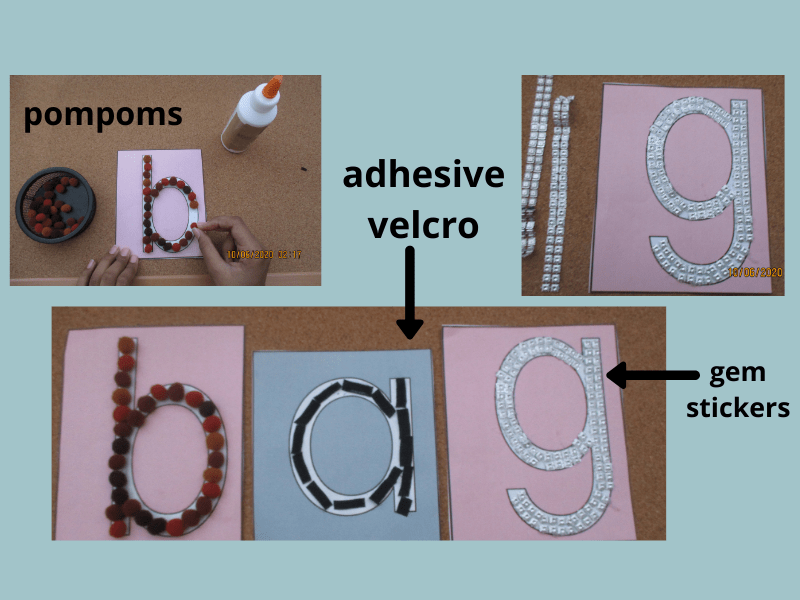
10 Fun DIY Sensory/Bumpy Letter Ideas
- Tiny pom poms
- Velcro dots
- Glitter sheets
- Pipe cleaners
- Glitter glue
- Foam sheets
- Felt
- Gem stickers
- Play dough
- Sandpaper
Preschool Writing Activities
Before the Worksheets

- Sand Tray: After tracing Sandpaper Letters, invite your child to write in a sand tray. Both can be practiced simultaneously.
- Metal Insets: These Montessori materials help build pencil control through tracing and coloring.
- Mini Chalkboards or Whiteboards: Writing on these surfaces adds fun and allows for easy corrections.
- Free Drawing & Colouring Sheets: Great for encouraging pencil grip and self-expression. Always keep a tray of blank paper and GOOS (Good On One Side) paper available for reuse.
Preschool Worksheets
Every child develops at their own pace. Observe your child to determine when they’re ready for worksheets—usually around 3–4 years.
Keep worksheets simple and distraction-free. Use just a few relevant images per letter sound and consistent visual cues like starting dots. Aim for 1–3 worksheets per week. Don’t expect perfection—writing takes time!
Preschool Worksheets in 3 Difficulty Levels
Preschool Journaling
Journaling is a wonderful way to support early writing. Children don’t need perfect handwriting to start!
Use a sketchbook or a three-hole folder to collect drawings and early writing. Encourage your child to explain their pictures, and write simple sentences to match.
Let your child decorate the folder cover—it makes journaling more special and motivating.
Revisit the journal often. It strengthens your bond and builds vocabulary. Each time you discuss a drawing, they may tell a new story!
Preschool Writing Activities: Sequence Chart
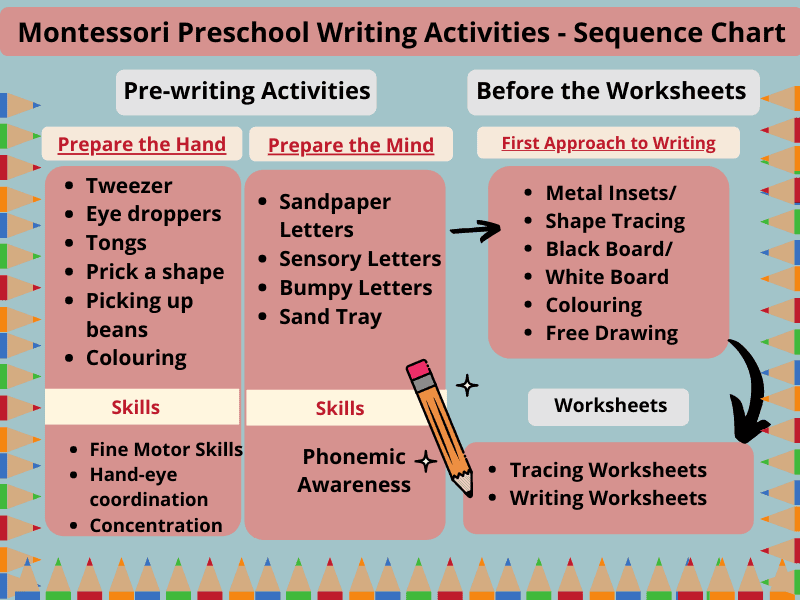
Some common writing challenges for preschoolers
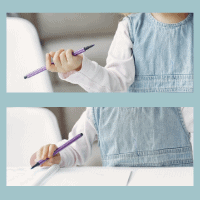
Pencil Grip
Most children start with a fist grip. Focus on fine motor development. Use activities that encourage the thumb, index, and middle fingers.
Letter Reversal
It’s normal for young children to reverse letters like b and d. Use gentle reminders and fun verbal cues like, “First draw the bat, then the ball,” for b. Tracing Sandpaper Letters beforehand is also helpful.
Letter Formation
From the beginning, show the correct start and end points of each letter. Give your child enough time and space to practice.
Switching Hands
This can happen before hand dominance is established. Place a pencil in front of the child and see which hand they naturally use. Gently encourage consistent use of that hand.
🛑 Disclaimer: These are typical developmental challenges for preschool-aged children. If you suspect deeper concerns, consult a professional for assessment.
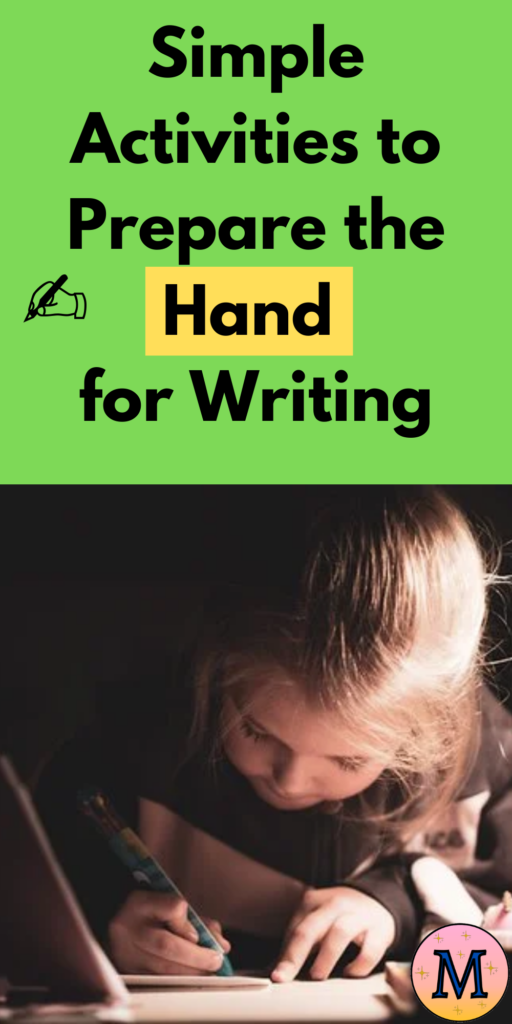
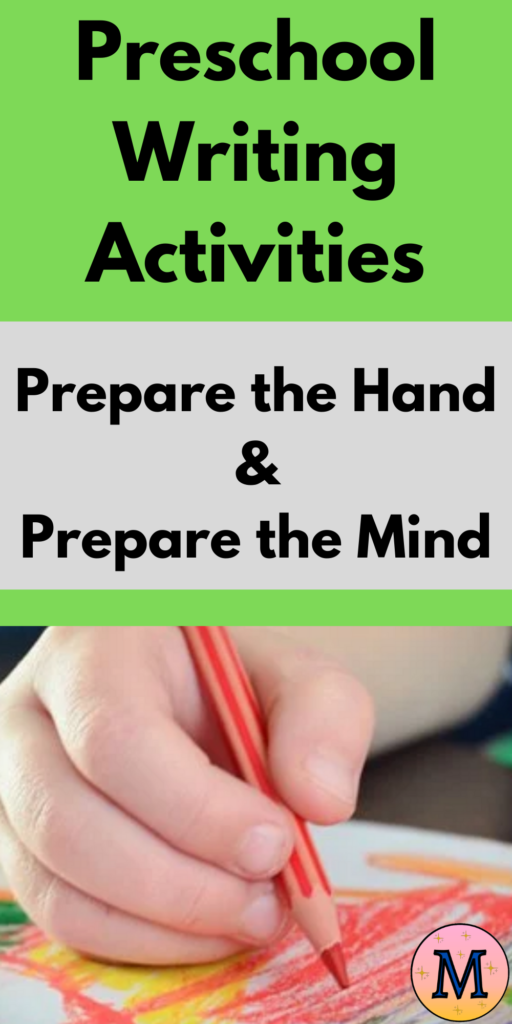
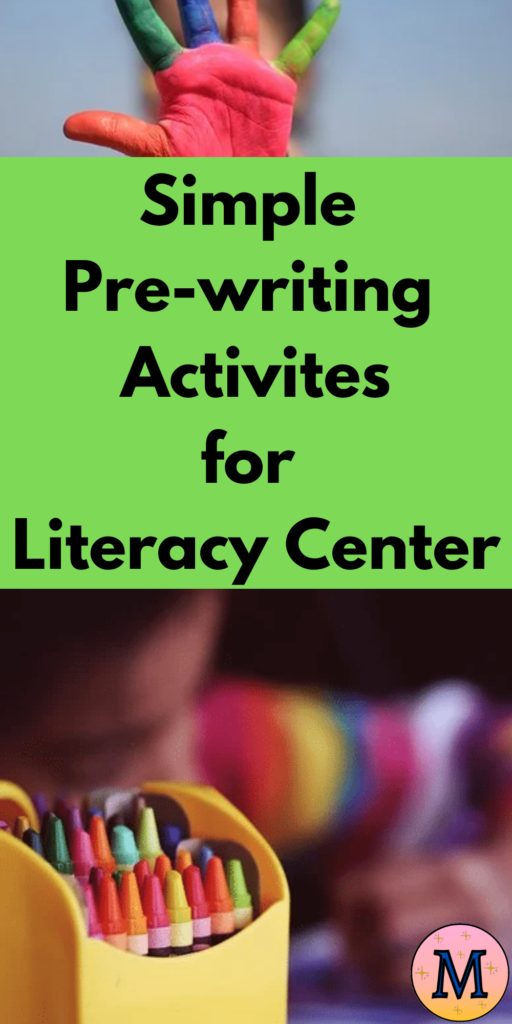



I was just searching of ways to help get my kiddo into writing her letters and this has been so helpful. I have found out that she is more of a left hand writer. But she uses her right hand to eat. I have a weirdo.
These are really great tips! My daughter is not quite old enough yet, but I will definitely be doing these with her when she is the right age. Thank you for breaking it down so easily.
Had to share this with my toddler’s teacher. I’ll also be trying some of these activities with him at home. Super fund of the DIY sensory letters. Now I know what to do with him in those windows when he’s bored on the weekend. lol
Thank you, Katie, yes most kids outgrow that habit of using both hands. I have found that Practical Life activities help a lot
Thank you, Sarah, It’s never too early to start Montessori with your child at home. I know I write for 2 1/2+ ages but there really cool activities for infants too. Maybe I will curate a blog post activity collection for younger ages.
Yes! you can never have enough activities when you have a toddler! been there 😀 lol. Thank you!